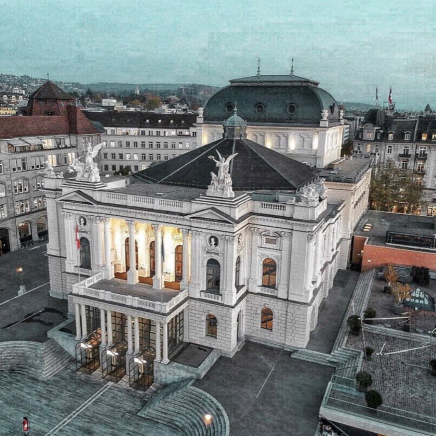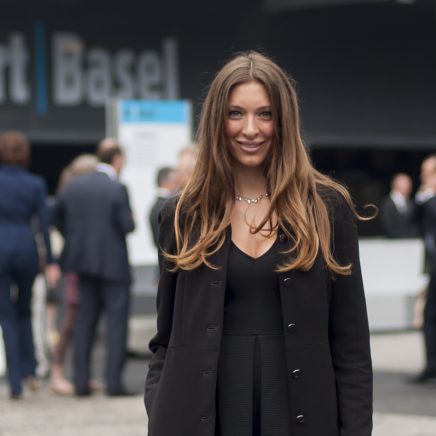Secret Venice
Why secret Venice? Because in many aspects, this stunning city is not well known by travellers. We all get stuck in the tourist trap and end up waiting in line forever, so pushed and squeezed by the crowds that we almost miss the beauty of the city. So here are some tips for itineraries which will might give you a different, maybe better impression about Venice. I collected them by: 1. Talking to locals; 2. Asking the experts: Walter Hartsarich – President of Fondazione Musei Civici di Venezia (the foundation of all Venice museums), and Gianmatteo Zampieri, Manager of the five stars hotel Luna Hotel Baglioni and great connoisseur of the history of Venice; 3-Trying things myself.
Here are my tips.
1. Detourism
Simply download “Fuorirotta”, a map and guide for anybody looking for sustainable, original and responsible tourism in Venice. Get around in the city and discover eco-friendly, cultural and local-oriented initiatives, enjoy parks and natural areas, eat organic and zero miles food, shop in craftsmen’s and fair trade shops (and no, that’s not boring, you can for example visit violin makers and traditional carnival costume makers and watch them working). There is even a section for ethical finance.
2. Spritz Time
When in Venice, do as the Venetians do. Spritz (an aperitif based on white wine, Aperol and a dash of seltz) is a full-scale ritual for locals. The occasion animates the bars and Osteria in the lagoon every day from 17:00 and is accompanied by a multitude of savoury side courses . A real must-try contemporary tradition. The liveliest spots to enjoy a spritz are in the Dorsoduro district, around Campo Santa Margherita, along the Fondamenta della Misericordia in the Canareggio area and Fondamenta degli Ormesini. Don’t try just one spot; that’s not what locals do. Go from place to place and enjoy the different atmosphere.The origin of Spritz is unknown, however, between the Venetian population is said that a not inconsiderable part in the spread of the Spritz is due to the soldiers of the Austrian Empire stationed in what was once the Republic of Venice, who, to dilute the high alcohol content of wines from Veneto, would stretch the wine with sparkling water. Hence the origin of the name from the German verb “spritzen”, which means “spray, splash”.
3. Secret itineraries
This is the perfect way to skip the (horrendous) line to enter Palazzo Ducale – the most visited palace in Venice – and will make you symphatize with Casanova. It is a tour through the Doge’s palace, offices, prisons and torture rooms, where Casanova among others was imprisoned. The tour sounds scary and does have a dark side to it (you will see the humid and dark cells where prisoners were kept, often with waters up to their knees 24 hours a day), but it also has a funny side. Your guide will tell you many entertaining details about Casanova’s friendship with a libertine priest who was in the same cell with him for having 6 natural children with 6 different women, and their alleged attempts at escaping. After months of digging, one day Casanova had finally reached the last thin layer of floor (i.e., of the ceiling of the room below him) which separated him from freedom. The very moment he started the final strike, the guards came to transfer him to a better cell. After bringing you to a secret passage, the guide will show you where Casanova was digging: exactly on top of a Tintoretto masterpiece he would have ruined forever, and…over the heads of three ruthless Inquisition judges, who were working below him that very moment, and would have no doubt killed him.
You will also see the official palace archives, which still contains a part of the 68 km of papers that survived the water, the damages of time and…of mice. The Doge used to ship empty boats to Syria and get them back full of cats; the best way at the time to preserve very important documents.
Your guide will also make you jump on the palace floors to test its elasticity (all floors of Venice palaces shake, and that’s the reason why they are still there) and show you other technological tricks dating back to the thirteenth century, and still used nowadays.
4. Get Lost
Trust me on this one; I’ve tried it. Buy a 24-hours card for the Vaporetto (the public line of boats), get on one which inspires you by the amount/kind of people in it, or by reading the fancy station names, exit somewhere you like and start walking…by the way this is also a good, healthy training. But most importantly watching the different alleys (“calle”),the people working or doing their chores, the shop windows, the doors and entrances, the hidden passages, the bridges, the coffee shops, the daily and night life and the wonderful architecture is sheer pleasure.

Venice at night: so beautiful that it might take your breath away. Photo: https://butterflyinthestomach.wordpress.com
5. Venice Backstage
As http://www.venicebackstage.org/en/ states, “Venice is not just a stage set. It is also a city with resident population, which has productive activities, transportation and services” But how does the Venice system works? How do the tides in the Lagoon behave? How are the canals formed? what’s under the buildings? How does electricity arrives to houses? How is all this maintained intact through the constant damage of water? Did you know that every few years sections of the canals in Venice are drained for maintenance? Watch what happens behind the curtains and make the fragile beauty of this fantastic city easier to appreciate.
6. Summer Venice – the grand fireworks of Redeemer Feast
Venice is not only Carnival. July is a great month to visit the city, because of the Festa del Redentore (Feast of the Most Holy Redeemer). It began as a feast to give thanks for the end of the terrible plague of 1576 which killed about 50,000 people, and it is held the third sunday of july.
On Saturday, the eve of the festival, fireworks are let off. Preparations begin early in the morning when people begin to decorate their boats, or the small wooden terraces on rooftops from where they can admire the fireworks. At sunset, Saint Mark’s basin begins to fill with up with boats of all kinds, festooned with balloons and garlands, and thousands of Venetians await the fireworks while dining on the boats. Around 10 o’clock at night, from pontoons placed nearby the island of San Giorgio Maggiore, the fireworks begin and Saint Mark’s basin becomes one of the most atmospheric stages in the world.
7. The brand new Museum of Perfume.
I didn’t even know that a Museum of Perfume existed, and I was actually right: in Italy there isn’t another museum dedicated to fragrances, and this particular one, in the beautiful Palazzo Mocenigo, has been only opened recently; in 2013.
When Walter Hartsarich, president of Fondazione Musei Civici di Venezia, told me about it and how successful it has been, I was surprised. I was also surprised to hear that the Fundation (the same that manages for example the Palazzo Ducale – the most important Venice attraction) is not supported by public money, but it is self-sustained thanks to the sale of tickets, merchandising and online items.
Back to the Museum, it is a must see for every fashionista: the grand rooms display paintings, furniture, splendid costumes (owned by the Centro Studi di Storia del Tessuto e Del Costume – Center for the Study of the History of Fabric and Costumes, which is part of the same building) and five rooms are dedicated to perfume, the importance of the city of Venice in its origin, tools and instruments, oils, rare essences, ampoules, preciously engraved or richly decorated bottles and glass objects. You will also smell different types of fragrances and learn about their basic classifications and techniques. A magic and emotional experience.

One of the antique perfume boxes that can be seen in the beautiful Palazzo Mocenigo at the Museum of Perfume. Photo: boxesmocenigo.visitmuve.com
8. Ca’ Pesaro
Let me state this again: the museum is self-supported, it uses no tax money, all the earning are re-invested, and last year under the management of Walter Harsarich and Gabriella Belli, its turnover went up 30%.
The International Gallery of Modern Art in Ca’ Pesaro contains important 19th- and 20th- century collections of paintings and sculptures including masterpieces by Klimt, Chagall, Kandinski, Klee and Moore, as well as a rich selection of works by Italian artists and important sections on graphic art. Its layout has been completely redesigned, providing and enlightening an introduction to a crucial period in art history. The Palace, no need to say, is gorgeous. Temporary exhibitions and the Museum of Oriental Art are part of the museum too.
A visit to the storerooms will show you a “hidden” heritage and the complex and articulated work which goes on behind the scenes during the phase of research,restoration aand promotion.
9. Palazzo Fortuny
Again a success story of Italian management, Palazzo Fortuny is less crowded than other classical Venetian attractions and offers an original look at the Venice experience. Mariano Fortuny created here is own atelier of photography, stage-design (for opera and theatre), costume and textile design (the amazing silk pleating is one of the highlights of the exhibition), the famous lamps, precious wall-hangings and the wonderfully intact library, a kaleidoscopic work in progress that brings together pieces by Fortuny himself and contemporary artists from very different backgrounds.
10. Your best ever picture to boast on Facebook – The colours of Burano
If you did buy the 24-hours card for the Venice public transport, you might want to go all the way to the tiny Burano island. You can make a stop over in Murano and watch glass making, and then head to Burano, which has simply the best colours facades I have ever seen. Contrasting pastel and lively coloured walls, doors, boats and coloured window frames will delight you. it is not possible not to take good pictures here. There are also a lace museum and some good seafood restaurants.
Appendix: Two restaurants
For gourmets who hate the tourist restaurants with a plastic, never changing overpriced Menu, here are the good news: there are plenty of good restaurants in Venice and surrounding area. One only needs to read a bit and avoid to just sit in the first crowded, poor quality tourist traps just near the main Venice attractions.
Two examples of high quality restaurants are Antica Osteria Cera, and Canova.























